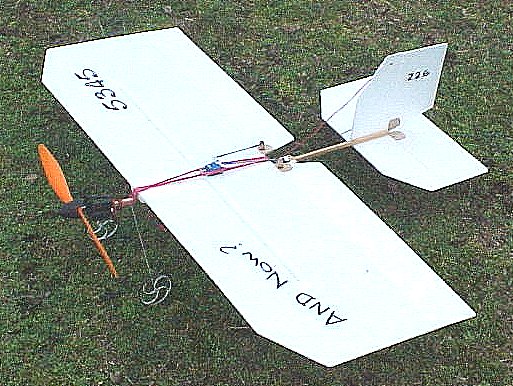
With a dual motor IPSD unit (4.1:1 ratio) performance was very good but it emphasised the wing flex. For a time the model was flown with a rudder servo but this didn't really do anything due to a complete lack of side area or dihedral.

This is a true indoor model since it flies very slowly and is adequately powered when using a 7:1 ratio GWS IPS unit and a 9 x 7 GWS prop. This combination will barely fly my standard 'Pico-stick'.
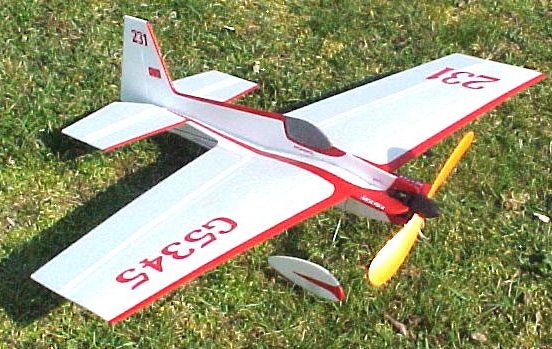

At just over 3 ounces, performance with the direct drive was good but the wing flexibility, combined with the cambered section eventually led to a tendenct to 'tuck' in fast flight. It seems that depron fatigues with age and becomes less stiff. Adding more carbon proved to be only a temporary fix so maybe carbon also fatigues.

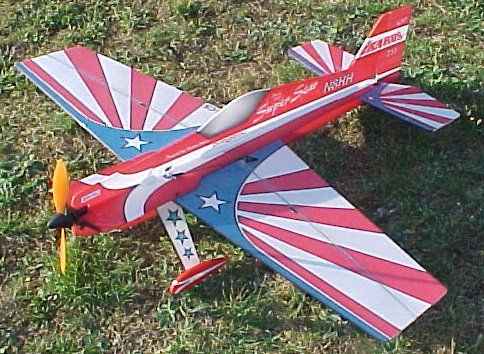
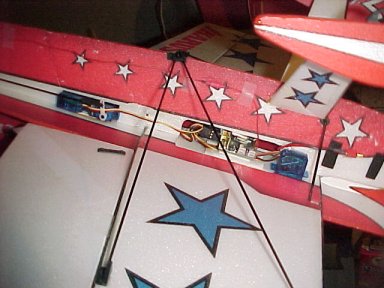
For some time I had wanted to produce a thicker, more rigid, wing using depron. Attempts to produce a new 'And Now?' wing using folded 3mm material proved to be too heavy. I came up with the idea of using two pieces of 1mm depron joined along the edges with a 4mm strip of the same material and then opening them up and inserting a spar of 5mm depron with a 2mm diameter carbon reinforcement. The result was a wing with less depron, far less carbon and much more rigid.
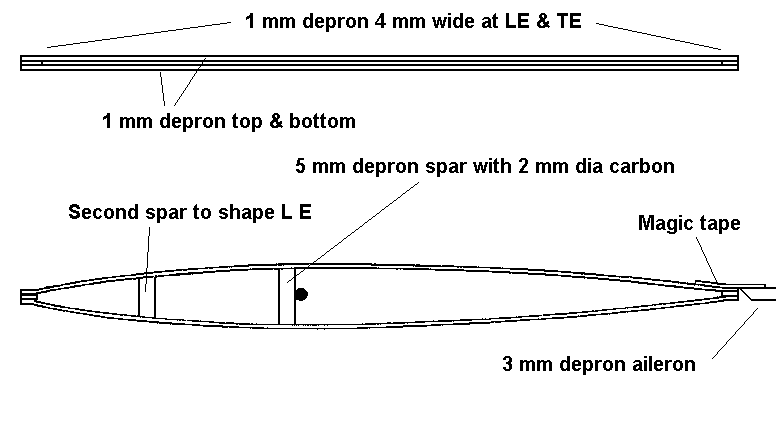
It also had a full length strip of depron bracing the vertical and horizontal parts of the fuselage as first used on the ''Nextra' and now used on most shock flyer kits - maybe they read this site! All these mods meant that the name had an added 'tra'.
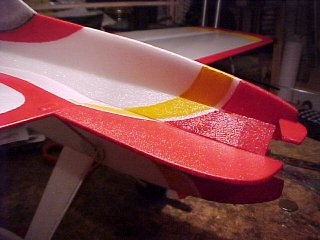
The overall weight was about 10 gram less than the 'Super Star' Flight performance was better because it was much stiffer and didn't have the drag of the struts. I went through the same progression with the power system, starting with an IPSD unit and then a brushless motor. This was a Gobrushless kit wound to the same spec as the C&K motor.
It is capable of much tighter manoeuvres than the 'Super Star' and is much less prone to screwing out of them due to the stiffer airframe. One thing that is not so good is a tendency to 'hunt' in fast forward flight. I assume this is due to the thin wing and sharp leading edge.
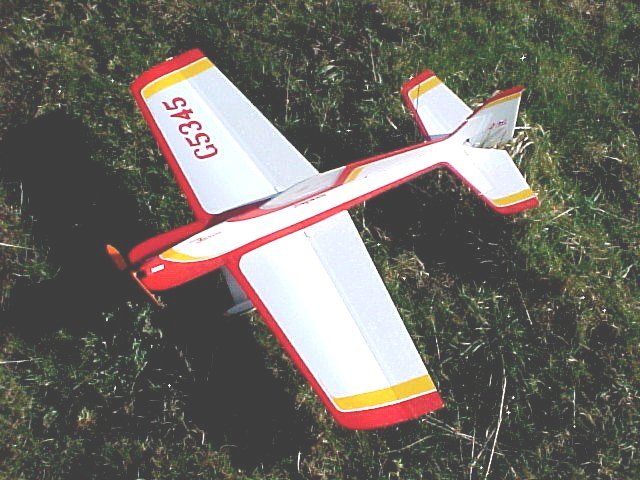
Being a little fixated on smaller models I built a 60% version of the 'Mini 3DX' - 'Micro 2DX'. This followed the original Foamy Factory plan and was built from 2mm depron with 2mm carbon bracing. With three Wes-Technik 2.4 g servos and a WMP ESC the weight was under 3 ounces. I built an identical indoor F/F version but with a cambered wing and no carbon, powered by a KP00 motor and 2x50 mAh nicads. This weighs well under an ounce.
Straightaway there were problems with the R/C version - the ailerons didn't work! This was due to the wing bending and the cure was to add 1mm carbon struts on the aileron hinge line, just like a shock flyer! The resulting thumps and the fact that the model was flown mainly outdoors meant that it rapidly became very tatty and needed a new nose grafted on.
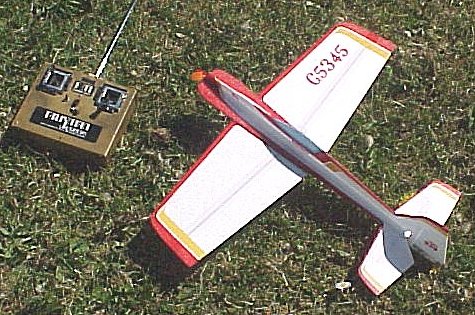
No it's not the same model as the one above! It's 60% of the size.
After a fairly short and adventurous life I decided that the radio deserved a better home and produced a built-up balsa version, hence:
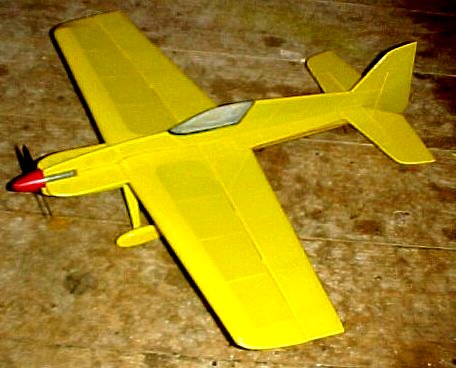
Part of the exercise here was to find out whether depron really was that light and maybe there was a better way. I also wanted to try the sort of wing section that is currently used on full-size aerobatic aircraft with a very blunt leading sdge.
This was produced by wrapping 1/32" sheet around the ribs with no actual leading edge as such. Covering was Solarfilm 'Solite' which added a total of 6 g to the basic airframe weight. Finished weight was 86 g - just 6 g more than the depron version - and no struts.

The other big improvement here is that the battery (2 x 340 mAh Li-Poly) goes inside the wing.
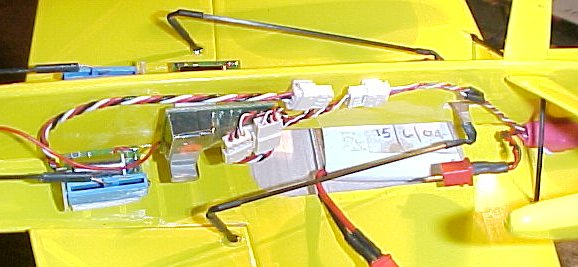
I was expecting a good performance with a direct drive GWS EDP50 unit and a 3 x 2 Union 'U80' prop. This combination worked well on the ''nd 'ow' and the 'Micro 2DX' at the same weight or heavier. So far, it's only been flown on a very cold morning, which may have affected the Li-Po performance, but it barely managed to fly. At the moment, I have to assume that it is the wing section, which is disappointing.
One result of that cold morning was that I broke one of the U/C legs on landing. A 3 ounce model breaking a 1.5mm carbon leg is amazing! Subsequent flights without the undercarriage - and in warmer conditions - reveal that the model will fly but it is clearly on the wrong end of the drag curve and won't even get over the top of a loop, though rolls are fine. Changing to a 250 mAh E-Tec Li-Poly pack saved 9 g and made a significant improvement. One landing in wet grass, however, added enough weight to make things very marginal.
One of two things is needed:
1 A substantial increase in power, or
2 A change of wing section.
Further flights with the 250 Li-Poly and no U/C showed that the model had reasonable performance in normal temperatures but power dropped off noticeably after about 2 minutes and the maximum flight time was around three and a half minutes. Replacing the U/C made only a slight difference at a flying weight of 80 g. It's very easy to get into a stalled condition where the model simply floats along without enough power to get out. It tends to dutch roll in these conditions. In turbulence it will half snap into inverted faster than you can follow it.
I'm tempted to cut the wing out and produce a built-up 3 mm thick flat wing, In the meantime, I've decided to produce a separate page for this model and post the plans. Interested parties go here.
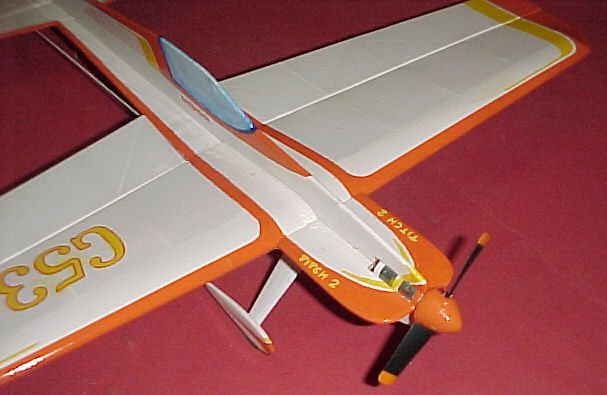
The demise of the first model gave the opportunity to build another with a different wing section. I originally intended to cover this one with tissue, but things rarely go to plan and it ended up as a near replica of the first with a wing section having a sharper leading edge. It did cross my mind at one point to thicken the wing and I now wish that I had done so.
The flying characteristics were very similar and the first real improvement came with the use of a Fullriver 300 mAh battery pack. This was of almost identical weight to the E-Tec 250 mAh pack but was more able to supply the current needed.
Certainly, the revised wing section gave an improvement, but whether it was enough to justify another model is questionable. The amount of work involved in building the model is probably as much as that needed to build a true scale model with a full fuselage.
So, after all that, the only thing that makes a real difference is power. The downside of that, of course, is that the model is very fast. Add to that the large control surfaces, designed for slow flying, and the model is very twitchy and needs a high tech transmitter to make it comfortable to fly.
To be continued...
